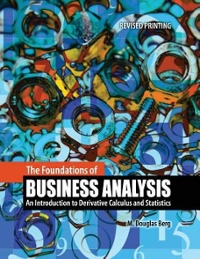Question
The term capital structure weights refer to the proportions of a firm's: A.market value financed with debt, common stock, and preferred stock. B. fixed assets
The term capital structure weights refer to the proportions of a firm's: A.market value financed with debt, common stock, and preferred stock. B. fixed assets invested in equipment, buildings, and land. C. book value of assets versus the book value of debt. D. assets invested in short-term versus long-term assets.
4. Which one of the following primarily determines the cost of capital for a project? A. current debt-equity ratio of the firm B. manner in which the funds will be utilized C. source of the funds for the project D. expected internal rate of return on the project
5. The overall cost of capital for a firm: A. should be used as the required rate of return for any new projects undertaken by the firm. B. reflects both the cost of debt financing and the cost of equity financing. C. is unaffected by the firm's capital structure. D. remains constant over time.
6. The cost of equity is affected by: I. the growth rate of the firm. II. the market risk premium. III. the risk level of the firm. IV. dividend increases or decreases. A. I and III only B. II and IV only C. I, II, and III only D. I, II, III, and IV
9. The security market line approach: A. provides an actual cost of equity because the risk level of the firm is known with certainty. B. relies on the past as a predictor of the future. D. is less applicable to business firms than the dividend growth model. E. considers the projected growth rate of the firm.
Step by Step Solution
There are 3 Steps involved in it
Step: 1

Get Instant Access to Expert-Tailored Solutions
See step-by-step solutions with expert insights and AI powered tools for academic success
Step: 2

Step: 3

Ace Your Homework with AI
Get the answers you need in no time with our AI-driven, step-by-step assistance
Get Started


